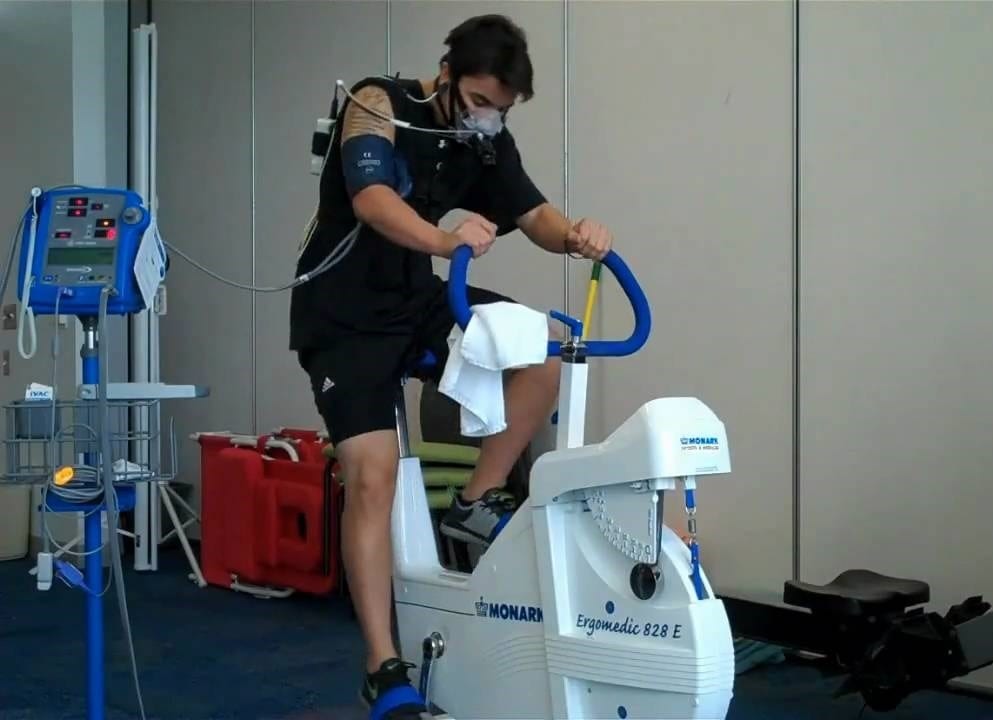Carbs vs. fat research update
It’s not often that revolutionary research comes around, but at the Eleventh International Society of Sports Nutrition (ISSN) Conference and Expo I think it’s safe to say some interesting science was presented.
These results of high vs. low carb diets may not come as a surprise to those who followed my Henselmans PT Courses, but if you’re still stuck in the high carb bodybuilding dogma, this may open your eyes. We’ll have to wait until the full texts are published and I’d like to see these results replicated, but for now the abstracts will have to do. I’ve abbreviated the abstracts for your convenience.

The effects of ketogenic dieting on skeletal muscle and fat mass
Jacob T Rauch, Jeremy E Silva, Ryan P Lowery, Sean A McCleary, Kevin A Shields, Jacob A Ormes, Matthew H Sharp, Steven I Weiner, John I Georges, Jeff S Volek, Dominic P D’agostino, Jacob M Wilson
Background
This is the first study ever to research very low carbohydrate ketogenic dieting (VLCKD) relative to a traditional high carbohydrate diet in resistance trained athletes.
Methods
Twenty-six college aged resistance trained men volunteered to participate in this study and were divided into VLCKD (5 % CHO, 75 % Fat, 20 % Pro) or a traditional western diet (55 % CHO, 25 % fat, 20 % pro).
All subjects participated in a periodized resistance-training program 3x per week.
Body fat and lean mass were determined via dual xray absorptiometry (DXA), while muscle mass was determined via ultrasonography analysis of the quadriceps.
All measures were taken at week 0 and 11.
Results
Lean body mass increased to a greater extent in the VLCKD (4.3 ± 1.7 kgs ) as compared to the traditional group (2.2 kg ± 1.7).
Ultrasound determined muscle mass increased to a greater extent in the VLCKD group (0.4 ± 0.25 cm) as compared to the traditional western group (0.19 ± 0.26 cm).
Finally fat mass decreased to a greater extent in the VLCKD group (-2.2 kg ± 1.2 kg) as compared to the traditional group (- 1.5 ± 1.6 kg).
Note: From what I gathered during Jacob Wilson’s presentation when we were both lecturing for the Norwegian Academy for Personal Training, this study included a carb-up at the end. This probably explains why lean mass rose so much in the ketogenic diet group, i.e. it’s glycogen and water, not muscle mass, though before the carb-up the ketogenic diet group still had better muscle growth and fat loss.
Conclusions
These results indicate that VLCKD may have more favorable changes in LBM, muscle mass, and body fatness as compared to a traditional western diet in resistance trained males.
Effects of a ketogenic diet on strength and power
Sean A McCleary, Matthew H Sharp, Ryan P Lowery, Jeremy E Silva, Jacob T Rauch, Jacob A Ormes, Kevin A Shields, John I Georges, Jacob M Wilson
Note: To my knowledge this is simply more data from the study above.
Results
The 1 RM bench press increased in both the LCKD (10.3 ± 4.4 kg) and western (9.5 ± 4.0 kg).
The 1RM squat increased in both LCKD (12.7±5.9kg) and western (15.2±7.6kg).
The wingate peak power increased in both the LCKD (51.8 ± 64.7 W) and western (80.5 ± 66.8 W).
Conclusion
A LCKD can produce similar strength and power gains to a western diet.
Note: I’d say that the Wingate test results are clearly in favor the western diet and it’s safe to say the same holds for all sorts of anaerobic-endurance exercise. (See the image below if you don’t know what a Wingate test is: it’s a brutal test of anaerobic power capacity on an ergometer.)

The effects of very high fat, very low carbohydrate diets on safety, blood lipid profile, and anabolic hormone status
Jeremy Silva
Note: To my knowledge this is simply more data from the study above.
Results
There were no differences in any of the safety parameters measured (CBC / CMP) in either the VLCKD or traditional group.
Total cholesterol increased slightly in the VLCKD group, while it decreased in the traditional western group. However, this rise was driven by an increase in HDL in the VLCKD group (6.69 mg/dl) compared to the western (-1.6 mg/dl) with no changes in LDL.
Triglycerides were significantly higher in the VLCKD group (29.3 mg/dl) than the western (-8.4 mg/dl).
Total testosterone increased significantly in the VLCKD diet (118 ng/dl) as compared to the western (-36 ng/dl) while insulin increased significantly in the western group (3.7 uIu/ml) compared to the VLCKD (.1 uIu/ml).
Conclusion
This study data suggests that a VLCKD is safe. In addition, this diet strategy improves testosterone values while simultaneously increasing insulin sensitivity. Lastly, even though the total cholesterol increased in the VLCKD group, their HDL drove this response. Athletes looking to optimize their hormone levels while employing a safe dieting strategy can use a VLCKD.
Effects of dietary macronutrient distribution on resting and post-exercise metabolism
Eric T Trexler, Abbie E Smith-Ryan, Hailee L Wingfield, Malia N Melvin, Erica J Roelofs
Background
Previous research has demonstrated that habitual dietary macronutrient distribution affects energy substrate utilization at rest and during exercise. The primary purpose of the current study was to examine the relationships between habitual baseline macronutrient intakes, expressed relative to bodyweight and percentage of total energy intake, and metabolism at rest and after exercise in women.
Methods
Twenty recreationally active women (Mean ± SD; Age 24.6 ± 3.9 yrs; Height 164.4 ± 6.6 cm; Weight 62.7 ± 6.6 kg; BF% 28.2 ± 4.8%) volunteered for the current study. Prior to metabolic testing, participants completed strength testing to determine their 1RM for six resistance exercises and completed a 3-day dietary log. Participants were provided with detailed instructions for accurately logging food intake and portion sizes, and instructed to record their regular food intake on two week days and one weekend day. Logs were analyzed using The Food Processor software (ESHA Research, Salem, OR, USA). Body composition was determined using dual-energy X-ray absorptiometry (DXA). Exercise was prescribed using baseline strength data and heart rate reserve calculations. Respiratory exchange ratio (RER) and resting energy expenditure (REE) were analyzed via indirect calorimetry (Parvomedics TrueOne 2400) before exercise (PRE), and during minutes 0-10 (IP), 25-35 (30min), and 50-60 (60min) post-exercise. Bivariate correlations and independent samples t-tests were completed using SPSS software (Version 19.0; IBM, Somers, NY, USA). Participants were stratified based on fat intake as a percentage of total caloric intake (high fat > 35% of total kcals, n=11; low fat < 35% of total kcals, n=9) and relative to bodyweight (high fat > 1.3 g/kg, n=11; low fat < 1.3 g/kg, n=9). Consent to publish the results was obtained from all participants.
Results
A significant inverse relationship between carbohydrate (CHO) intake (g/kg) and REE was observed at IP (r=-0.539, p=0.014), 30min (r=-0.569, p=0.009), and 60min (r=-0.577, p=0.008), with a trend toward significance at PRE (r=-0.413, p=0.07).
Participants consuming > 35% of kilocalories from fat had a significantly higher bench press 1RM (p=0.048) and lower RER at 30min (p=0.033) and 60 min (p=0.033).
Participants consuming > 1.3 g/kg of fat per day trended toward lower fat mass (p=0.09) and BF% (p=0.07).
Conclusions
Results indicate that baseline macronutrient distribution impacts post-exercise energy metabolism in women. Higher fat and lower CHO intake was associated with greater post-exercise REE and lower post-exercise RER, indicating greater fat utilization. Higher fat intakes may also influence resistance exercise performance and body composition; participants with higher fat intake had a greater bench press 1RM and trended towards lower indices of adiposity. These results suggest that the relative contributions of CHO and fat to total caloric intake may have significant implications for metabolism and body composition in women.
 Want more content like this?
Want more content like this?
Then get our free mini-course on muscle building, fat loss and strength.
By filling in your details you consent with our privacy policy and the way we handle your personal data.
